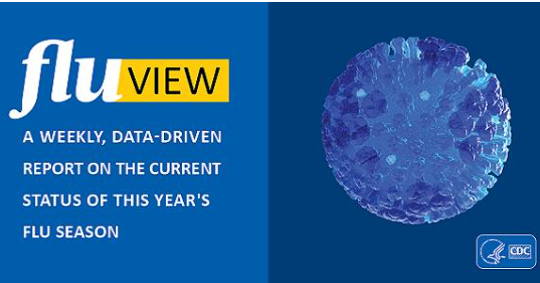Weekly U.S. Influenza Surveillance Report

The U.S. influenza surveillance system is a collaborative effort between CDC and its many partners in state, local, and territorial health departments, public health and clinical laboratories, vital statistics offices, health care providers, hospitals, clinics, emergency departments, and long-term care facilities. Information in five categories is collected from nine data sources in order to:
- Find out when and where influenza activity is occurring;
- Determine what influenza viruses are circulating;
- Detect changes in influenza viruses; and
- Measure the impact influenza is having on illness, hospitalizations, and deaths.
It is important to maintain a comprehensive system for influenza surveillance for the following reasons:
- Influenza viruses are constantly changing (this is commonly referred to as “antigenic drift”), and thus ongoing data collection and characterization of viruses are required.
- Influenza viruses can also undergo an abrupt, major change (referred to as “antigenic shift”) that results in a virus that is much different than currently circulating influenza viruses. Surveillance of viruses can detect these changes and inform the public health response.
- Annual vaccination is recommended, and vaccines are updated regularly based on surveillance findings.
- Treatment for influenza virus infection is aided by laboratory surveillance for antiviral resistance.
- Influenza surveillance and targeted research studies are used to monitor the impact of influenza on different segments of the population (e.g., people in certain age groups, people with underlying medical conditions).

Straight from the horse's mouth... for more detailed info please visit cdc.gov